Assume 0 units of initial inventory Extra capacity may be obtained by subcontracting at an additional cost of $15 per unit over and above the company's producing them itself on regular time Provide a detailed cost breakdown for using a level vs a chase strategy to meet the increased demand Which strategy do you recommend?The chase capacity strategy implies matching demand and capacity period by period (Chase and Aquilano, 1985) In the chase capacity strategy, workforce levels are adjusted through the process of hiring, firing or lay off of production employees to produce output levels to match demand requirements In situations of high demandFollowing are the capacity management approaches that you can consider • Level Capacity • Chase Demand • Demand Management For example, if you identify level capacity as the approach then include references from other sources to support this approach

Pdf Lean Capacity Planning Planning For Maximising Customer Value Semantic Scholar
Level capacity and chase demand
Level capacity and chase demand-Demand chase is a production control plan that attempts to match capacity to the varying levels of forecast demand Chase demand plans require flexible working practices and place varying demands on equipment requirements Pure chase demand plans are difficult to achieve and are most commonly found in operations where output cannot be stored or– fast food restaurants Time flexibility from workforce or capacity;




3 Types Of Capacity Planning Strategies Valq
Demand forecasting may be used in production planning, inventory management, and at times in assessing future capacity requirements, or in making decisions on whether to enter a new market Demand forecasting is predicting future demand for the product In other words, it refers to the prediction of a future demand for a product or a service onThe chase demand technique, revealed in Figure 114( b), matches the production strategy to the demand pattern and soaks up variations in demand by employing and shooting employees TECHNIQUES TO MATCH DEMAND AND CAPACITY The most essential task of the service online marketer is stabilizing/ matching the demand and capabilityFor instance, if the skill level and training required was low, a chase demand strategy was recommended Heskett et al expanded on Sasser's work to include a third alternative – "modified" chasedemand This was for the cases where a service did not fit neatly into either chasedemand or levelcapacity
Level capacity and chase demand utilities practice a pure form of _____ level capacity what best illustrates the pure form of chase demand?Capacity planning is a strategic process whereby a company determines what level of capacity it will need to satisfy the level of demand for its products or services over a period of time Three An approach to aggregate planning that attempts to match supply and output with fluctuating demand Depending on the product or service involved, the approach can incur costs by the ineffective use of capacity at periods of low demand, by the need to recruit or lay off staff, by learningcurve effects, and by a possible loss of quality The advantages include low storage
The level and chase demand capacity utilization strategy is to be used as Level Strategy It is to be used when the same quality and quantity of the production procedures are required ChaseGood planning is the key to the creative management of supply and demand in service industries The two extreme strategies for matching demand for services with capacity to supply them are "chase demand" and "level capacity" Service managers alter demand with the following demandleveling options pricing, developing nonpeak demand, developing complementaryCall centers that schedule the number of phone agents according to expected variations in demand what is the level capacity strategy




Capacity And Aggregate Planning Aggregate Planning The Process




Capacity Planning Jit And Lean Systems Online Presentation
Chase demand strategy In this type of strategy the capacity is matched to the level of demand A period's planned quantity of output is equal to that period's expected demand Level capacity strategy When an organization adopts the level capacity strategy then it manufactures at a constant output rateThis revision video provides an overview of the concept of capacity, capacity utilisation and some of the issues facing businesses operating at low or high uHow is the chase demand strategy opposite of level capacity?
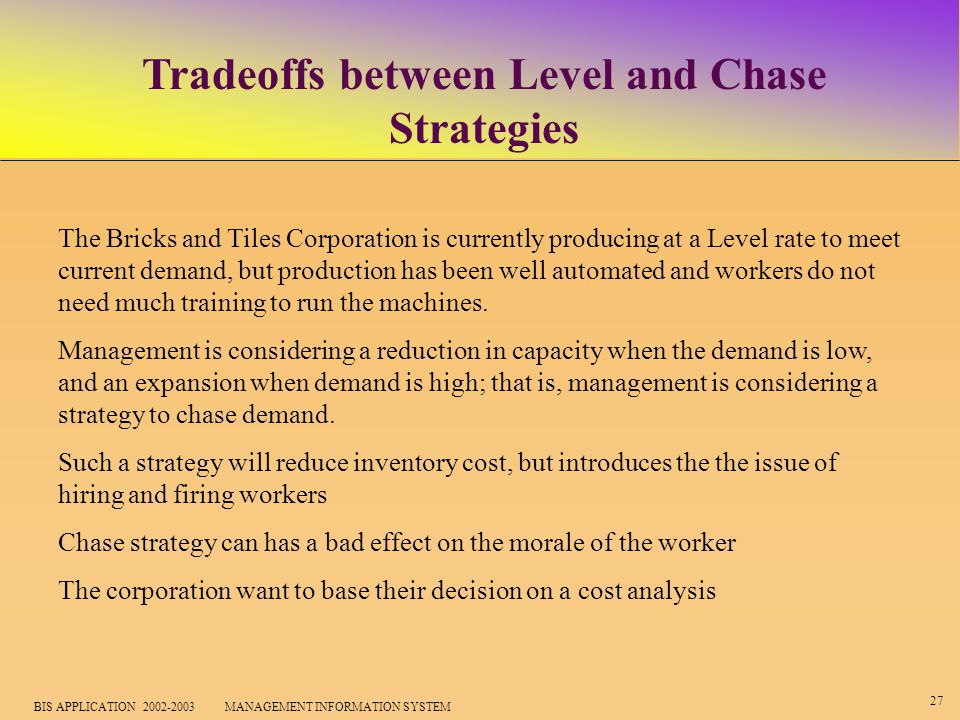



Chapter 5 Aggregate Planning Operations Analysis Using Ms Excel Ppt Download
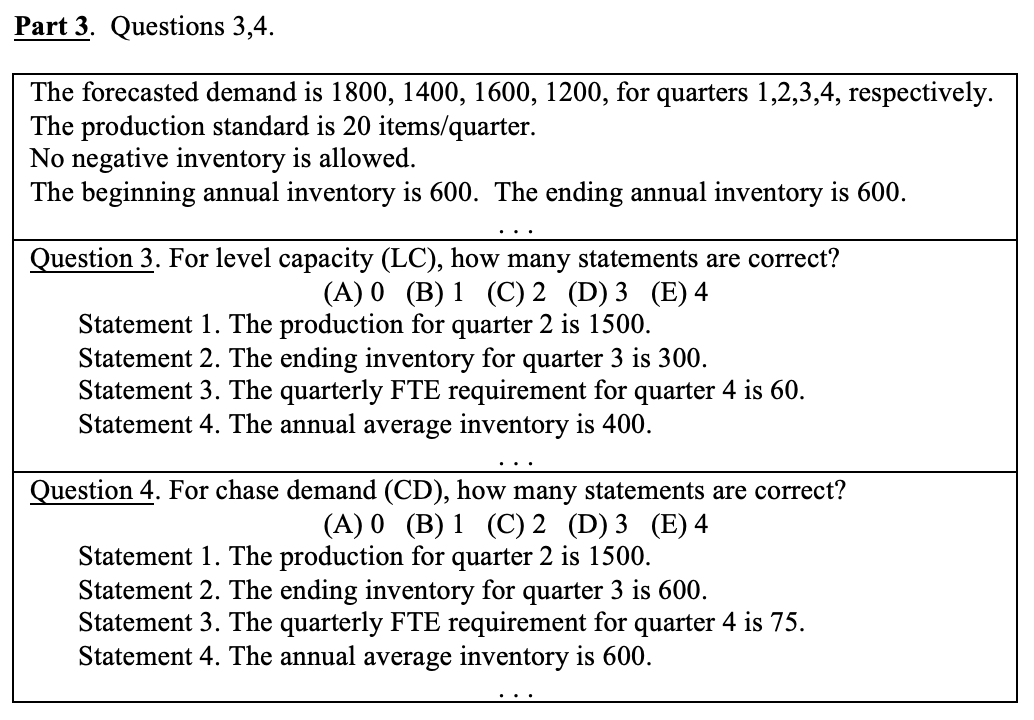



Part 1 Question 1 Question 1 How Many Statements Chegg Com
A level capacity strategy is also known as a chase demand strategy False An advantage of a "chase" strategy for aggregate planning is that inventories can be kept relatively low True Linear programming models yield the optimal solution TrueA level capacity strategy is also known as a chase demand strategy Free True False Unlock to view answer Q 12 Q 12 In order to use the level capacity strategy, variations in demand are met by A) varying output during regular time without changing employment levels B) varying output during regular time by changing employment levelsLevel capacity plan 2 Chase demand plan 3 Demand management 8) The idea of a fluctuating workforce that matches demand can be regarded as unethical 1 True 2 False 9) Queueing theory describes the expected behaviour of customers in a queue 1 True 2 False




Demand And Capacity Management Decision Steps Download Scientific Diagram




Ensuring Capacity Matches Demand Business Govt Nz
Align capacity with demand fluctuations This basic strategy is sometimes known as a "chase demand" strategy By adjusting service resources creatively, organizations can in effect chase the demand curves to match capacity with customer demand patternsAbout Press Copyright Contact us Creators Advertise Developers Terms Privacy Policy & Safety How works Test new features Press Copyright Contact us Creators– swim wear 14 Matching the Demand U s e i n v e n t o r y Use delivery time U s e c a p a c i t y Demand Demand Demand 15 Aggregate planning at




3 Types Of Capacity Planning Strategies Valq




Sustainable Operations Model Mindmeister Mind Map
Figure Level Capacity Plan Figure shows the level capacity plan of a company manufacturing a product on produce to stock and sell basis In the first quarter aggregate demand is less than production and inventory builds up till the end of the First Quarters in the second third and fourth quarters are inventory levels Decline because Alternative Capacity Management Strategies• Level capacity (fixed level at all times)• Stretch and shrink – offer inferior extra capacity at peaks (eg bus/metro standees) – vary seated space per customer (eg elbow room, leg room) – extend/cut hours of service• Chase demand (adjust capacity to match demand) – schedule downtime1 Attempt to change demand to fit available capacity using demand management 2 Adjust capacity to reflect the fluctuations through a chase demand plan 3 Increase marketing activity and develop a chase demand plan 4 Ignore the fluctuations and apply a level capacity plan Increase marketing activity and develop a chase demand plan Read More




Aggregate Planning Planning Horizon Aggregate Planning Intermediate Range



Www Diva Portal Org Smash Get Diva2 Fulltext01 Pdf
An essential disadvantage of level strategy is building up inventory costs during the lean period when the demand is low 2 Chase strategy The chase strategy of aggregate planning puts its onus on reducing inventory It keeps pace with demand fluctuations by varying either actual level of output or the workforce number Pure Strategies for Meeting Demand (a) Level Production inventory, backorder/lost sales Units Time Production Demand (Sales Plan) Production Demand 10 Time Units Demand Production (b) Chase Demand hire/fire, overtime, parttime, subcontract 11In other words, Manager A is tied to the "chase demand" strategy, and his counterpart, Manager B in the adjacent office, is locked into the "level capacity" strategy




Inse6400 Principles Of Systems Engineering Production Instructor Dr Ayda Basyouni Office Ev Pdf Free Download
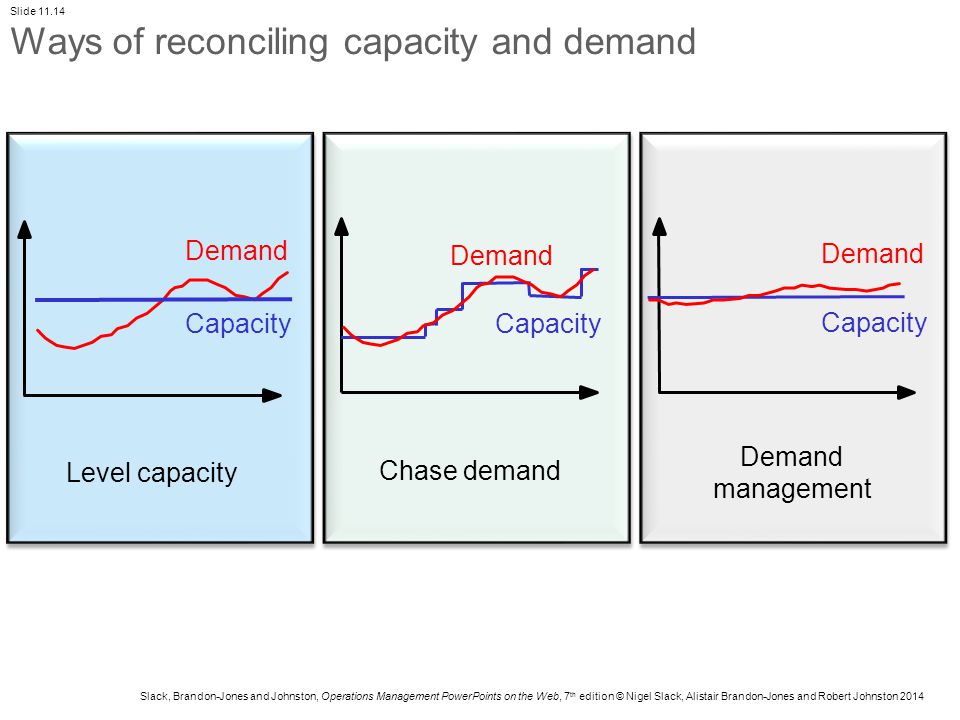



Chapter 11 Capacity Management Ppt Video Online Download
Chase demand strategy is an uncertain demand strategy where the changes made to the output level will depend on the change in the demand In case of chase strategy, the main concern of the management is to respond to the changes in the demand In this strategy, the output changes are carried out following the demand changes in order to save the inventoriesLevel capacity and chase demand Warning Can only detect less than 5000 charactersNo fluctuation or change in the level of demand What is the actual ability?The Extremes Level Strategy Chase Strategy Production equals demand Production rate is constant Basic Aggregate Planning Strategies for Meeting Demand Level capacity strategy Keeping work force constant and maintaining a steady rate of regulartime output while meeting variations in demand by a combination of options (such as using inventories



Is Muni Cz El Econ Jaro09 Phom Um Chapter 11short Pdf
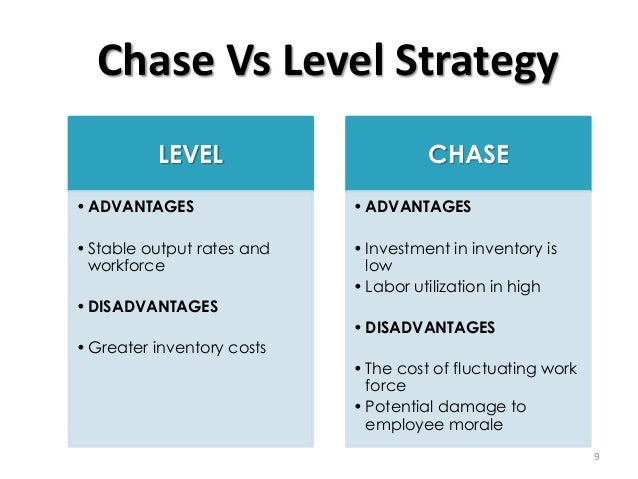



Models Of Aggregate Planning
A small manufacturing plant is considering their aggregate plan for the next fiscal year They are limited to a maximum number of 40 FTEs each quarterChase (the demand) strategy;Chase Capacity Management Opposite to the level capacity management is the chase capacity, " organisations could decide to match capacity and demand by altering the availability of resources This might be achieved by employing more people when it is busy and adopting strategies such as overtime and additional shifts




Mcq S Week 7 Capacity Management Chapter 8 Week 7 Capacity Management Which Of The Following Studocu




Basic Strategies Level Capacity Strategy Chase Demand Strategy Ppt Download
Compare and contrast the level and chase aggregate plans These plans are similar since both plans ensure that demand is met However, they meet demand in different ways A level plan maintains the same workforce size and equipment, thus producing the same amount of product each time period• An aggregated level of demand for one or few categories of product • The possibility of changing both supply and demand Chase versus Level Strategy Chase Demand Level Capacity Level of labor skill required Low High Job discretion Low High Compensation rate Low HighChase Regular time output = Minimum(Forecast, Capacity) Level Required production = Average forecasted demand per period Number of workers = (Required Production/period) / (Production rate/ worker/period) Chapter 12 Material Requirements Planning GR Plannedorder releases of "parents" x No required per unit OR Master Schedule for level zero
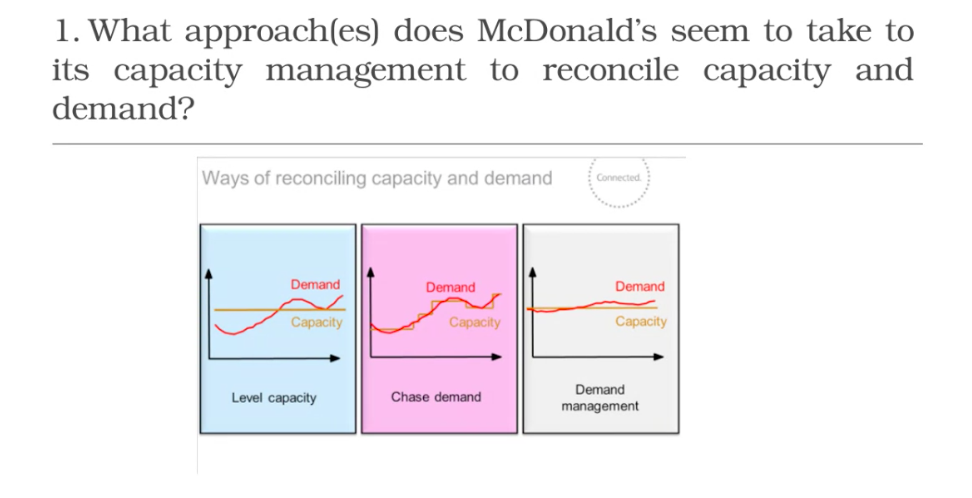



Hi Could Helop Me Please With This Task By Guiding Me Chegg Com




Aggregate Planning
Strategy of Level capacity, which is to produce at a certain capacity ignoring the change of demand whether it increases or decreases, they just supply each month with a certain rate, and in case demand decreased or there are still items not sold, it is stockpiled, by the seller 2) Chase demand strategy Chase demand strategy is the opposite start a level capacity strategy Aggregate Planning level capacity and chase demand strategy Add Remove This content was COPIED from BrainMasscom View the original, and get the alreadycompleted solution here!Capacity planning is a strategic process whereby a company determines what level of capacity it will need to satisfy the level of demand for its products or services over a period of time Three The daily demand, within each month, is uniform and continuous CHASE STRATEGY The objective of this method is to set production equal to forecasted demand In this method, the monthly




Tqm Chapter 11 Assignment Operations Management Tqm Bmc 1101 Studocu




Long Term Capacity Management Linking The Perspectives From Manufacturing Strategy And Sales And Operations Planning Sciencedirect
The present study proposes a novel decision model to aggregate production planning (APP) decision making problem based on mixed chase and level strategy under uncertainty where the market demandChase demand strategies Chase demand strategies are the totally opposite of level capacity in which the organisation frequently requirements to match levels of customer demand to its production volume as an example of JIT systems Such strategy will need the flexible employ of• Level Aggregate Plans – Maintains a constant workforce – Sets capacity to accommodate average demand – Often used for maketostock products like appliances – Disadvantage builds inventory and/or uses back orders • Chase Aggregate Plans –




Basic Strategies Level Capacity Strategy Chase Demand Strategy Ppt Download
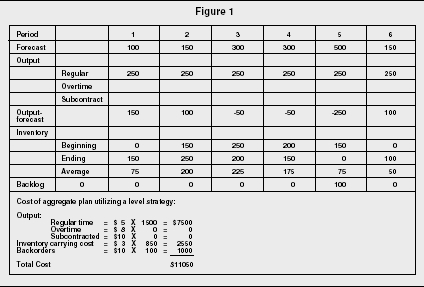



Aggregate Planning Strategy Organization Levels System Examples Model Type Company System
The use of a chase strategy requires that a company have the ability to readily change its output level, which means that it must be able to readily change its capacity In some industries where labor is the major determinant of capacity, and where additional labor is readily available, such changes may be feasibleThe idea here is that a level schedule is used during consistent periods and the chase strategy is used during months with fluctuating demand This can be helpful in seasonal business For example, a company that made Halloween chocolates, may maintain a level schedule for 9 months of the year and then use a chase strategy during the weeks There are two main aggregate planning methods and strategies the chase strategy and level strategy The chase strategy sets production equal to forecasted demand Many service organizations such as schools, hospitality businesses and hospitals, use the chase strategy The level strategy is mainly focused on maintaining a constant output rate




Aggregate Planning Intermediaterange Capacity Planning Usually Covers A




Study Of Manufacturing System Capacity Planning Control Steps In Capacity Planning Measuring Demand Capacity Yield Management
The actual capacity is the maximum amount of work that an organization is able to complete in a given period due to constraints such as quality problems, delays, material handling, etc– machining shops, army Level strategy;



3




Introduction To Aggregate Planning And The 3 Plans Level And Chase Strategy Included Youtube




Ppt Mgsm0 Operations Management Powerpoint Presentation Free Download Id



2




Aggregate Planning Studiousguy
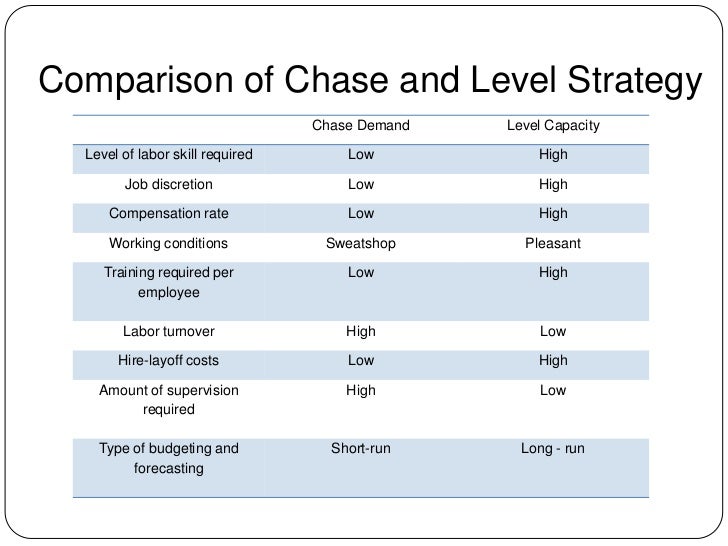



Aggregate Planning Report




Logistics And Supply Chain Forum Aggregate Production Planning Part Ii




Guide To Level Production Strategy Welp Magazine




Mcq S Week 7 Capacity Management Chapter 8 Week 7 Capacity Management Which Of The Following Studocu




Pdf Long Term Capacity Management Linking The Perspectives From Manufacturing Strategy And Sales And Operations Planning Semantic Scholar




Linking Long Term Capacity Management For Manufacturing And Service Operations Sciencedirect




Aggregate Planning Strategy Organization Levels System Examples Model Type Company System




Operations Management Lesson 8 Flashcards Quizlet



Master Production Schedule




Match Supply And Demand In Service Industries



Capacity



1




Pdf Lean Capacity Planning Planning For Maximising Customer Value Semantic Scholar




Chase Demand Strategy Chase Demand Strategy Quarter Spring Summer Fall Winter Sales Forecast 80 000 50 000 1 000 150 000 Production Plan 80 000 Course Hero




Week 3 Planning Control And Capacity Management Flashcards Quizlet
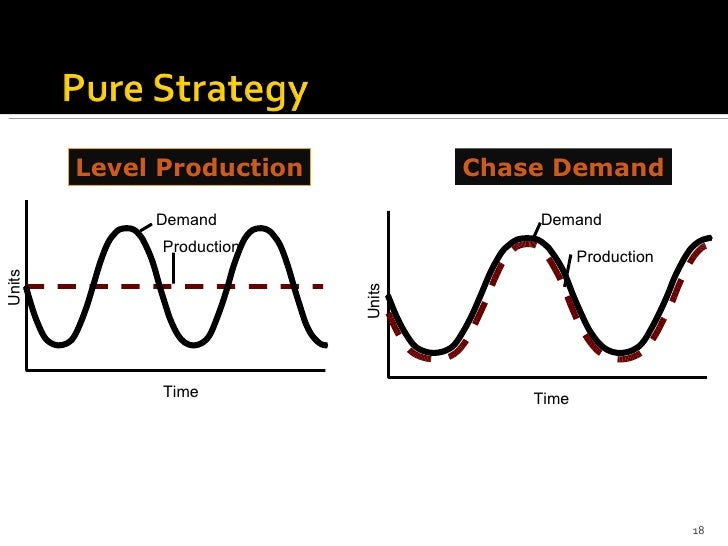



Productionplanning Aggregate Capacity




Entries For Thursday 25 October 07 Sergio S Blog




Demand And Capacity Management Decision Steps Download Scientific Diagram




Demand And Capacity Planning In The Emergency Department How To Do It Emergency Medicine Journal




Capacity Planning An Industry Guide Plex Demandcaster
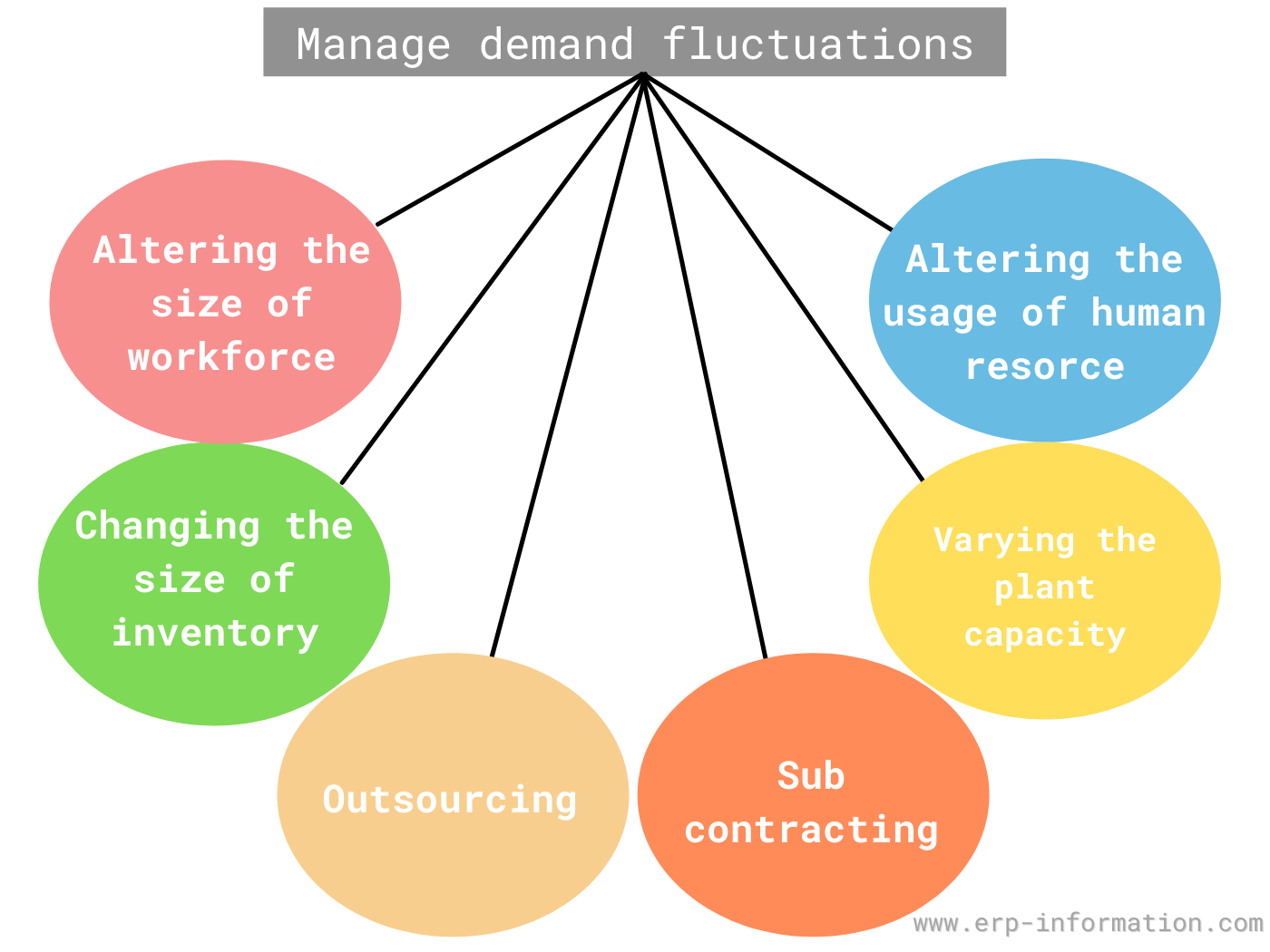



What Is Aggregate Planning 3 Strategies For Aggregate Production Planning




Aggregate Planning Chapter 11 Aggregate Planning Aggregate Planning




Capacity Planning And Control Chapter 11 What Is



Aggregate Production Planning Operations Management Homework And Assignment Help



Is Muni Cz El Econ Jaro09 Phom Um Chapter 11short Pdf
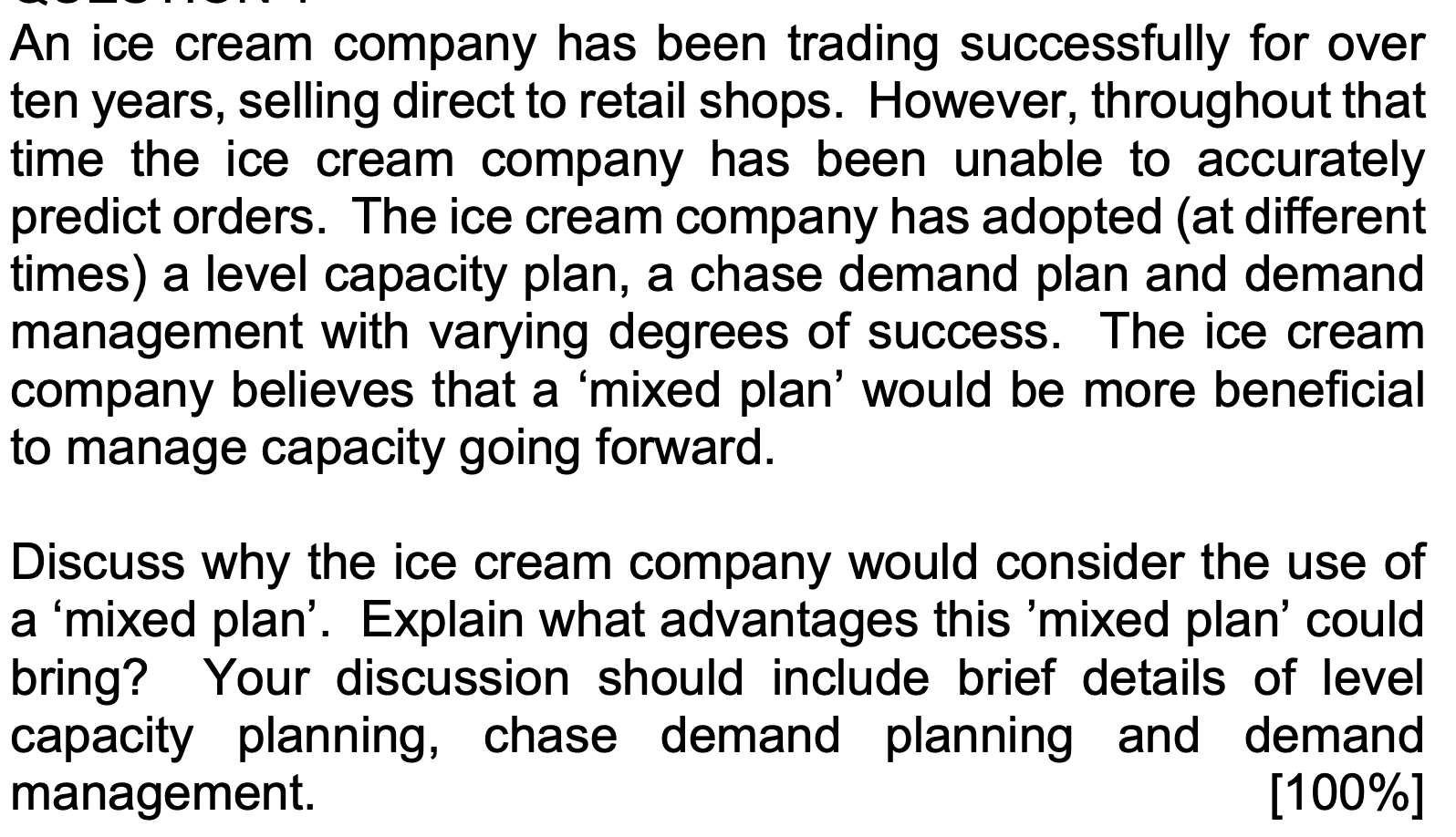



An Ice Cream Company Has Been Trading Successfully Chegg Com



Operational Management Lesson 6 Exercise Reflective Online Learning 01 03 09 Ignacio S Blog



Www Open Ac Uk Centres Policing Sites Www Open Ac Uk Centres Policing Files Files News An evaluation of demand Management Practices In Uk Final Report Pdf




Chapter 11 Managing Capacity And Demand Chapter 11 Managing Capacity And Demand Service Capacity Is A Perishable Commodity For Example A Plane Flying Course Hero



Mba638 Files Wordpress Com 17 01 Om L5 Capacity Management Pdf




Mgsm0 Operations Management Ppt Download




Ppt Chapter 13 Aggregate Planning Powerpoint Presentation Free Download Id
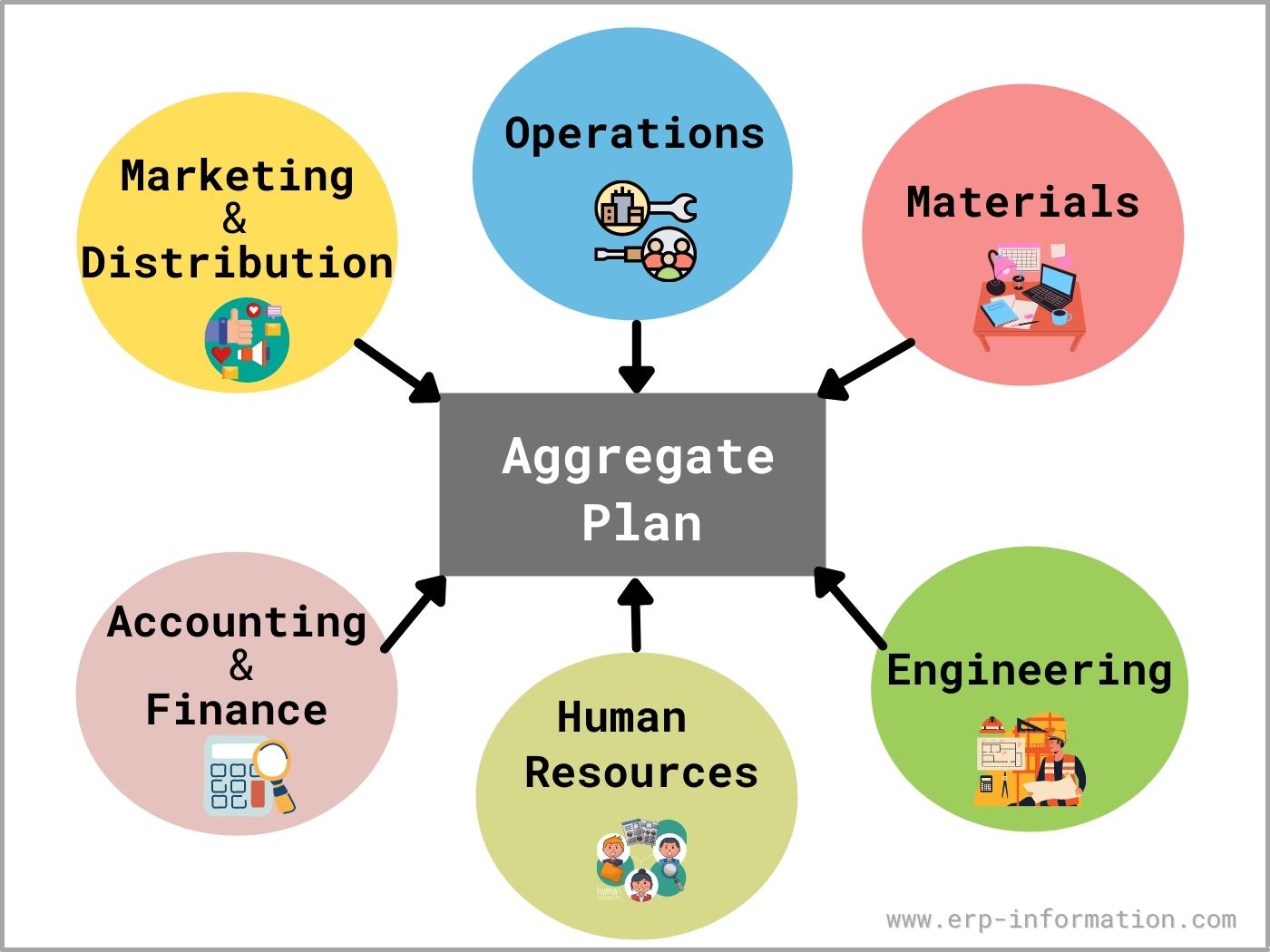



What Is Aggregate Planning 3 Strategies For Aggregate Production Planning




Aggregate Planning Studiousguy




Models Of Aggregate Planning




Lsc 343 Ch 8 Level And Chase Production Plans Youtube



1
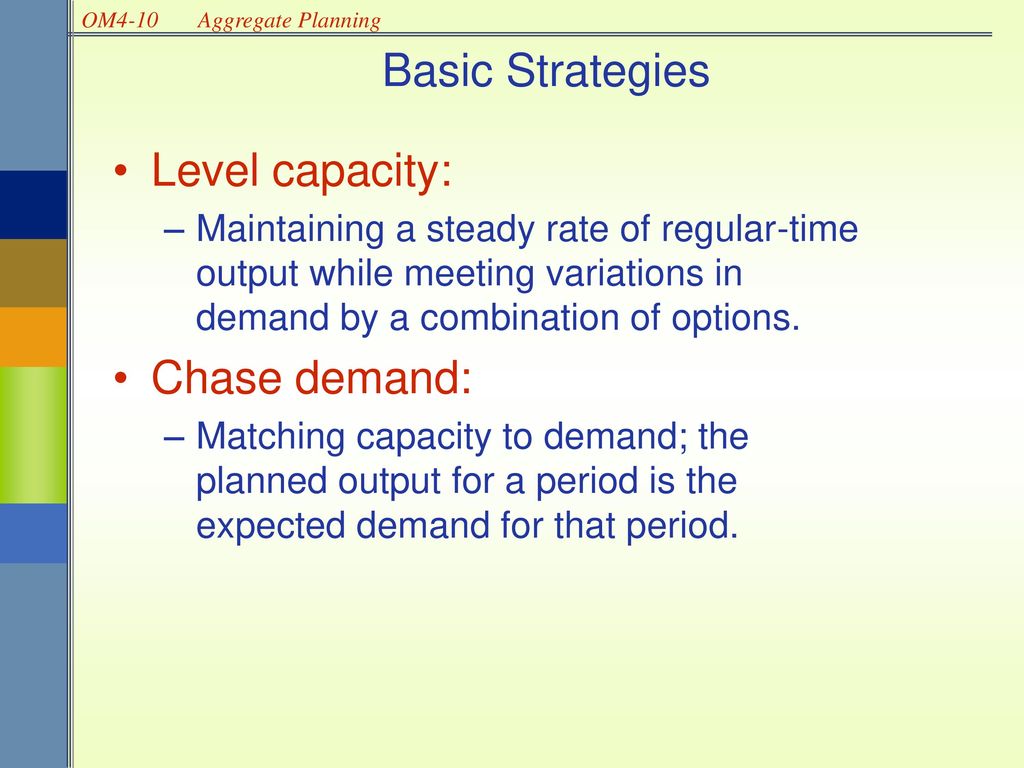



Chapter 14 Aggregate Planning Ppt Download




Managing Capacity Capacity Management Youtube
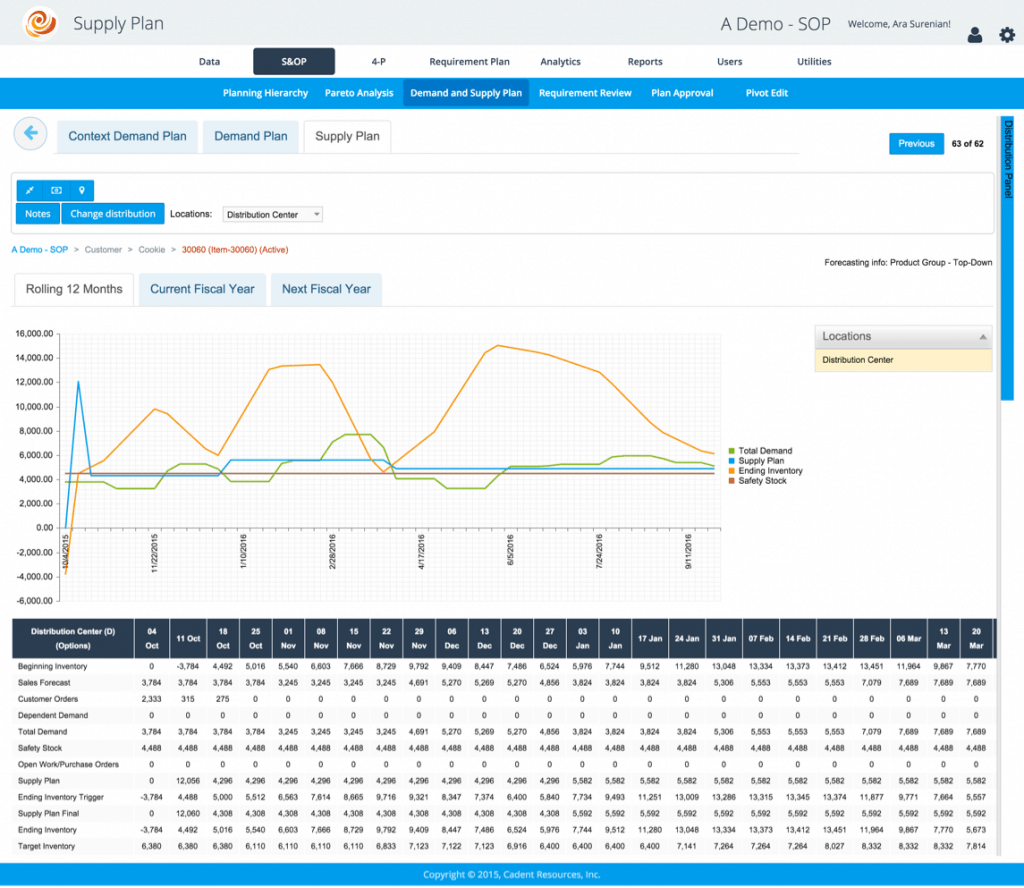



Supply Planning Processes Options Analytics Oh My Plex Demandcaster




Demand And Capacity Management Options Adapted From Fitzsimmons And Download Scientific Diagram




Learning Startegies Chas And Level Production Pdf Inventory Demand
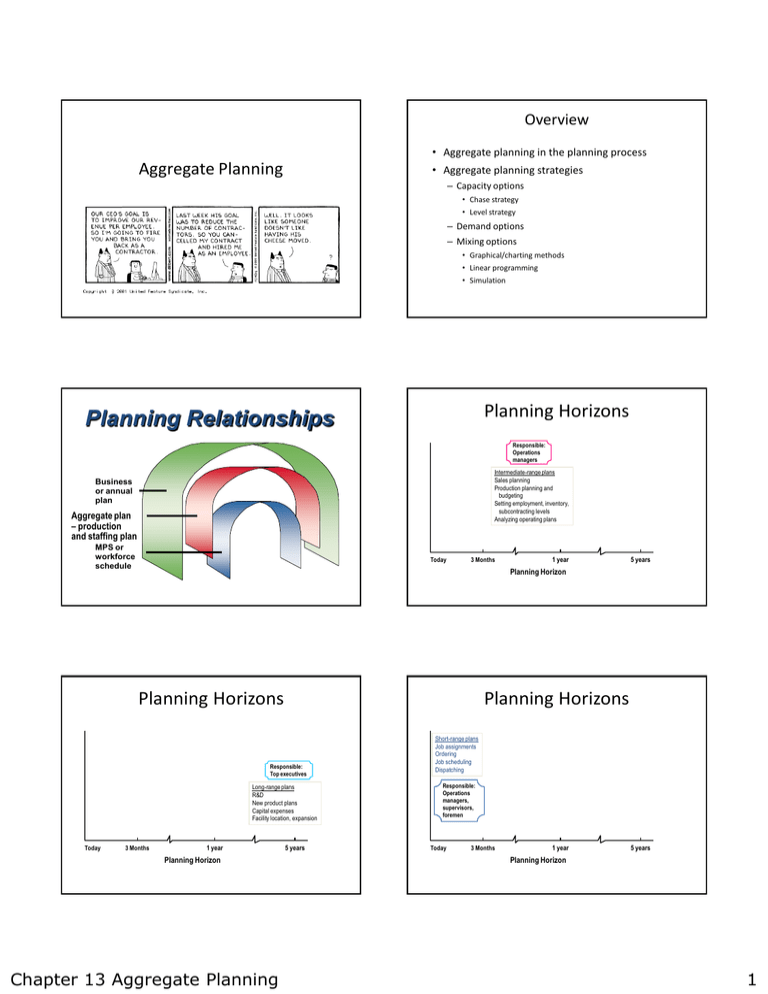



Planning Relationships Planning Horizons Aggregate Planning




Operations Management Daniel S Blog
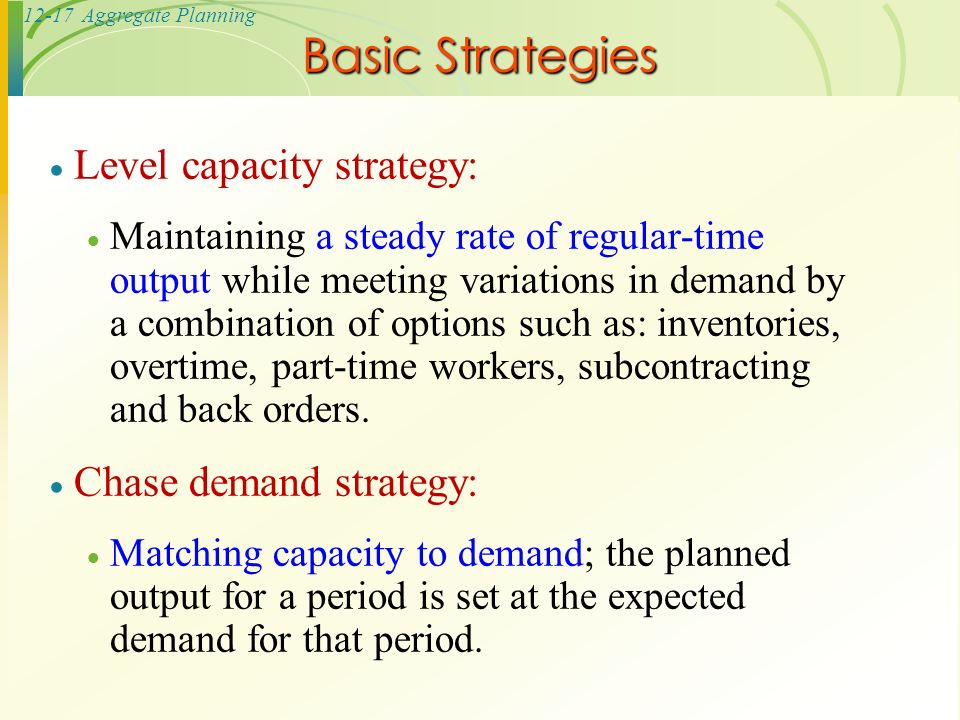



Operations Management Ppt Video Online Download
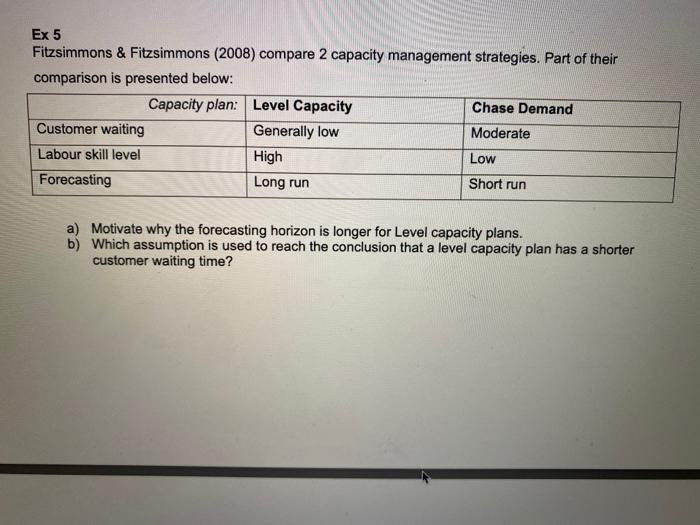



Answered Ex 5 Fitzsimmons Fitzsimmons 08 Bartleby
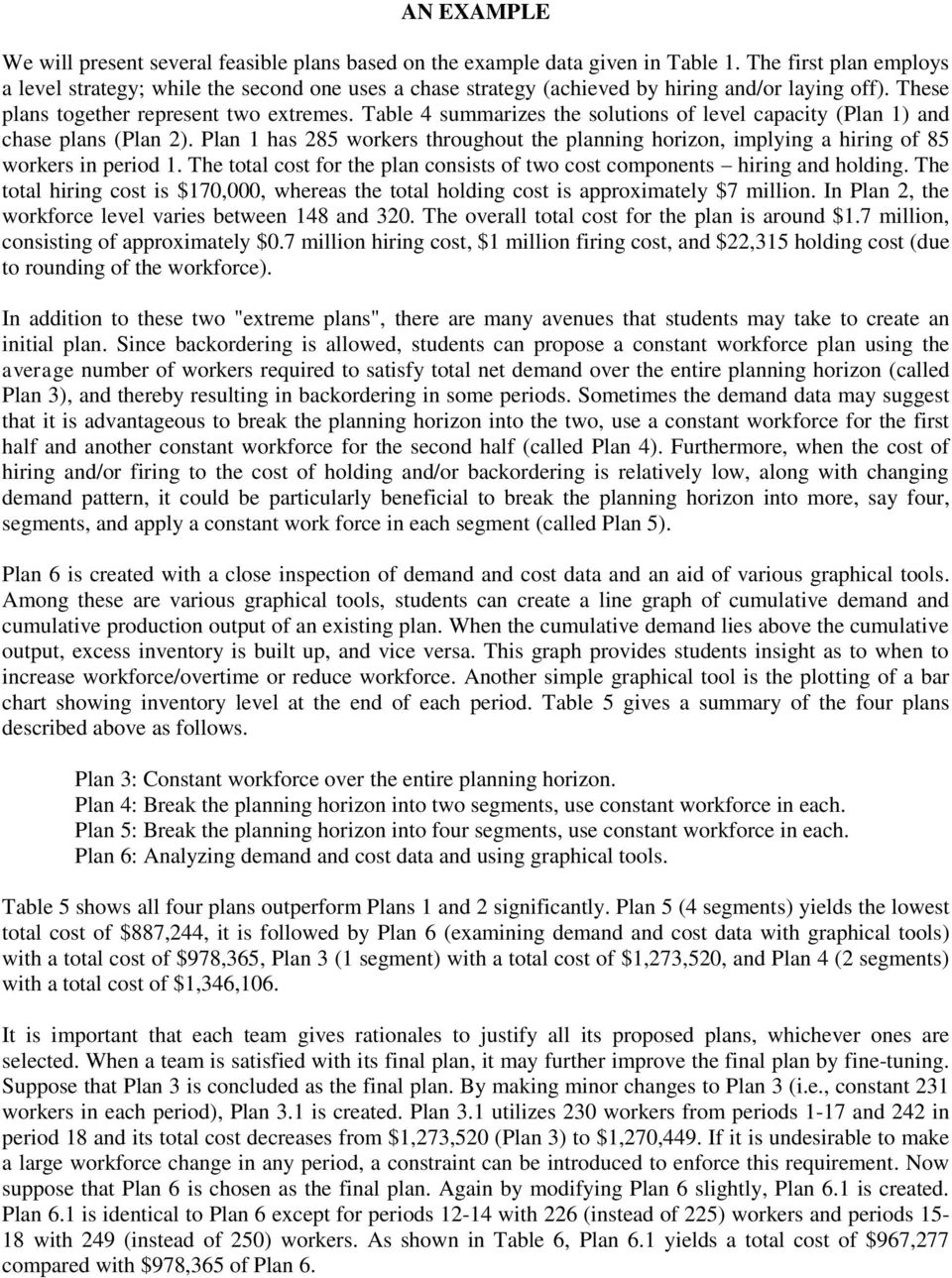



Teaching Aggregate Planning In An Operations Management Course Pdf Free Download




How Is Yield Management Implemented In Airline Industry Ayat Saleh




Aggregate Planning



Sihombing15 Files Wordpress Com 08 08 Ch 7 Aggregate Capacity Planning Pdf



Master Production Schedule




Aggregate Capacity Planning Pdf Free Download




Solved Question 4 4 Points Two Strategies For Matching Chegg Com




Hb52 Mba Mps Flashcards Cram Com




Aggregate Planning Chapter 11 Mis 373 Basic Operations Management Ppt Download




Aggregate Planning And Learning Curves Chapter Outline 1
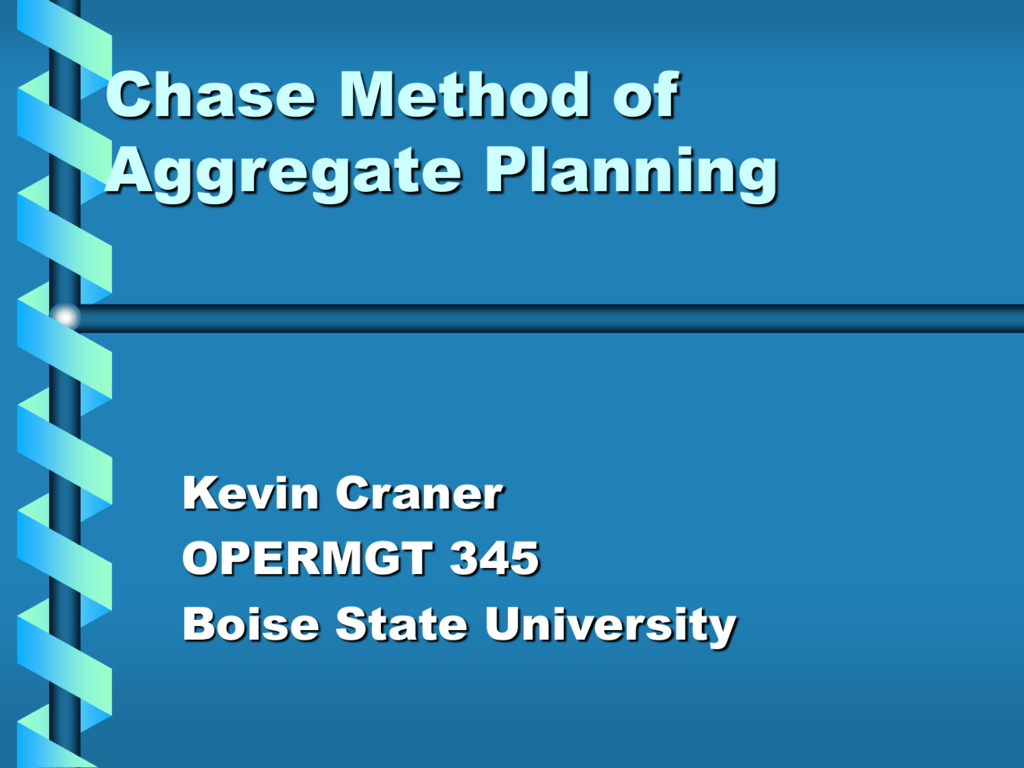



Chase Method Of Aggregate Planning



Researchportal Port Ac Uk Portal Files Boydell 11 Pub Ch7 Capacity Planning And Management Pdf



Myclass Dau Edu cswebdav Xid 4 2




Week 6 Resource Planning System Supply Chain Management Scmgt303 Studocu




Operations Management Chase Or Level Production Term Paper



Call Centre Capacity Management Emerald Insight
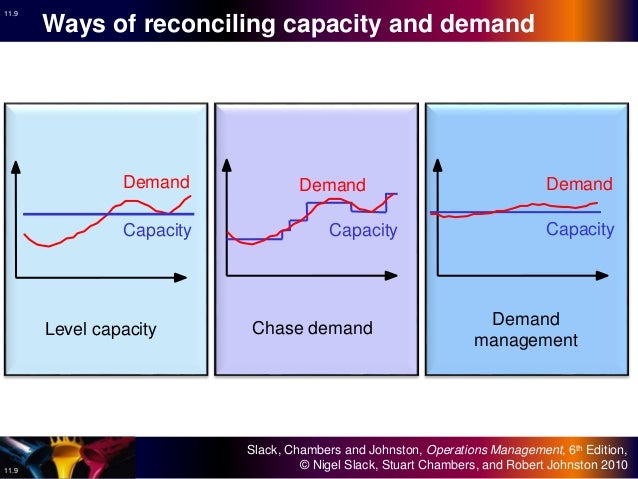



11 Capacity Planning And Control Operations Management



Myclass Dau Edu cswebdav Xid 4 2
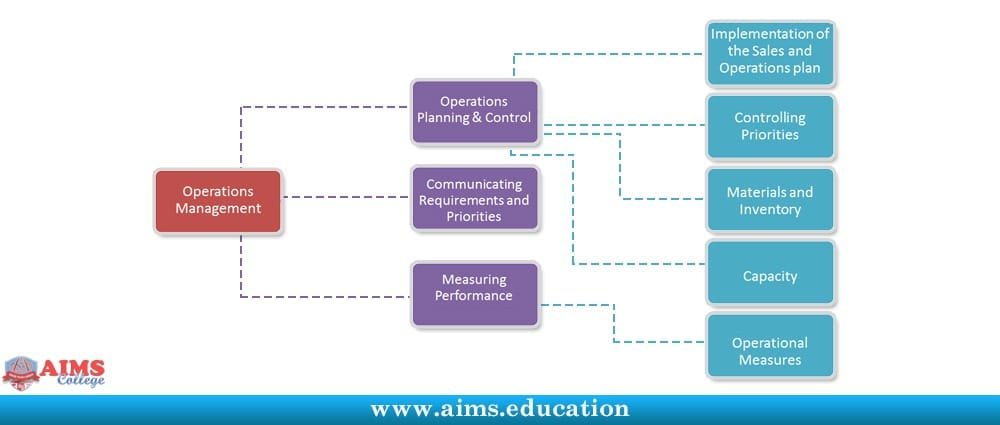



Operations And Supply Chain Management Aims Uk




Aggregate Planning Mps Capacity Planning Pdf Strategic Management Inventory




Lecture 7 Managing Capacity And Demand Flashcards Quizlet




Ppt Planning Demand And Supply In A Supply Chain Powerpoint Presentation Id



Researchportal Port Ac Uk Portal Files Boydell 11 Pub Ch7 Capacity Planning And Management Pdf




Aggregate Planning Youtube




Complete Guide To Chase Demand Strategy Welp Magazine




Chapter 11 Managing Capacity And Demand Mc Grawhillirwin




Demand And Capacity Management Options Adapted From Fitzsimmons And Download Scientific Diagram



M Dc Operations Strategy



Operational Management Lesson 6 Exercise Reflective Online Learning 01 03 09 Ignacio S Blog



0 件のコメント:
コメントを投稿